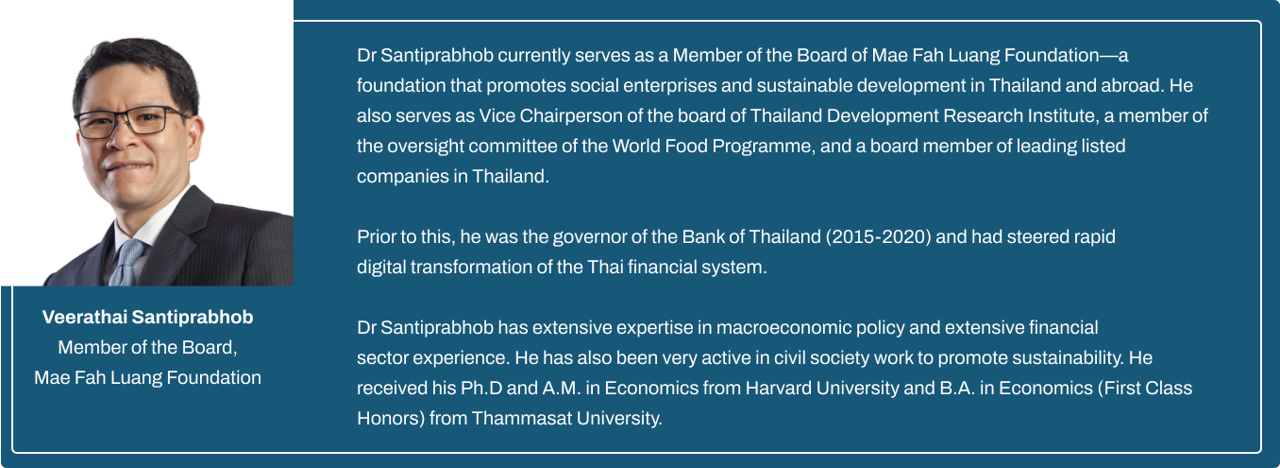
Photo by Alexander Abero on Unsplash
I. Introduction:
The tide is shifting. Customers are expecting more from the businesses they patronise. 70% of customers are willing to pay more for sustainable products, according to a 2022 McKinsey & Company global poll. Environmental, social, and governance (ESG) considerations are becoming more and more important to investors when making decisions. In 2021, global sustainable investment will reach a record $35 trillion. Sustainability is now a strategic requirement for companies looking to succeed over the long run, not just a side issue.
Greenwashing is a growing threat, and consumers are demanding more. RepRisk, a leading ESG data science company, found in their 2023 report that one in every four climate-related ESG risk incidents globally is tied to greenwashing. This significant increase highlights a critical shift: superficial efforts like green labels or carbon offsets are no longer enough. Consumers are savvier and expect companies to take concrete action. These deceptive practices not only damage brand reputation but also hinder progress on the critical environmental and social challenges facing our planet.
Herein lies the need for a fundamental change in the function of the Chief Sustainability Officer (CSO). Don't hold the CSO stereotype of an environmental monitor with a compliance-only agenda. The authentic sustainability leader possesses vision, acting as a Chief Innovation Officer and utilising innovation to propel constructive transformations.
II. The CSO as Chief Innovation Officer: Leading the Sustainability Charge
Innovation is clearly necessary for sustainability. However, who is in the greatest position to advocate for this crucial change within the corporate structure? The solution is found in redefining the job of a well-known C-suite title—the Chief Sustainability Officer (CSO)—rather than creating a new one.
The CSO has historically been seen as an environmental protector, controlling environmental risks and assuring regulatory compliance. The really revolutionary CSO understands that innovation holds the key to unlocking a sustainable future, even though these roles are still crucial. As a Chief Innovation Officer, this new type of CSO uses its in-depth knowledge of social and environmental issues to propel the creation of innovative solutions.
Innovation for a Greener Future:
Think about the global warming challenge. Thanks to ongoing innovation, renewable energy sources like solar and wind power—which were long considered niche technologies—are currently seeing tremendous expansion. According to the International Renewable Energy Agency (IRENA), in 2021, renewable energy sources contributed an astounding 82% of new power capacity added worldwide. This innovation aims to create a cleaner, more secure energy future rather than merely making the environment feel wonderful. CSOs can stimulate a large decrease in greenhouse gas emissions, which is a vital first step in reducing climate change, by supporting research and development in renewable energy alternatives.
Beyond Green Tech: Circularity and Social Responsibility
Innovation is not limited to eco-friendly alternatives. A circular economy, in which things are made to be disassembled and reused, is becoming more and more popular. By using responsible sourcing techniques, this strategy reduces waste and resource depletion while promoting social responsibility. One of the top outdoor clothing companies, Patagonia, has adopted clothing repair and refurbishing programmes to increase the life of its items and keep them out of landfills. Collaborating with the production and product design teams, the CSO may promote circularity concepts, guaranteeing that products are not only environmentally friendly but also functionally sound.
Innovation's effects go beyond its positive effects on the environment and the economy. Sustainable company strategies increasingly must incorporate socially conscious behaviours. By utilising innovation, businesses can create blockchain solutions that guarantee supply chain transparency, discourage unethical sourcing, and support fair labour standards.
Furthermore, community development programmes that generate mutual benefit for the companies and the communities they serve can be energised by innovation. To enhance public health outcomes and foster brand loyalty, Unilever's "Lifebuoy" soap brand collaborates with communities in underdeveloped nations to promote sanitation and hygiene education. The procurement and marketing departments, in conjunction with the CSO, can lead creative social responsibility programmes that improve brand recognition and promote constructive social change.
Essentially, the CSO function as a CIO is a key player in spearheading a new wave of environmentally friendly corporate practices. The CSO can guide businesses towards a future in which sustainability and growth are not mutually exclusive goals but rather two sides of the same coin by encouraging innovation in the environmental, social, and economic domains. But small steps towards transformation won't bring about this future. It necessitates a daring vision, an openness to change, and the guts to take risks. The CSO has the chance to design a more profitable and sustainable future for businesses and the environment as the champion of this innovation imperative.
III. The CSO as Chief Innovation Officer: Leading the Charge
The Chief Sustainability Officer (CSO) position is changing from what it was in the past. Although maintaining environmental compliance is still essential, a more forward-thinking perspective is taking shape. In addition to being a watchdog, the CSO of the future will also be a chief innovator, utilising innovation to drive companies towards a sustainable future.
This enlarged function goes well beyond following regulations. The progressive CSO can promote innovation in three important areas in the following ways:
Embracing Technological Advancements:
The rapid advancement of technology offers a wealth of options for CSOs that prioritise sustainability. Consider using artificial intelligence (AI) to maximise productivity and minimise waste in industries by optimising resource management. AI is already being used by businesses like Siemens to cut manufacturing energy consumption by up to 20%, so this is not science fiction.
Another topic worth investigating is the potential for blockchain technology to alter. Blockchain can improve supply chain transparency by enabling businesses to track goods from the point of origin to the point of manufacturing, guaranteeing moral sourcing and resolving disputes. To increase traceability and consumer confidence, IBM Food Trust, for example, tracks the movement of food goods using blockchain technology.
Through proactive investigation of these cutting-edge technologies, the CSO can pave the way for a more ethical and sustainable company strategy.
Reimagining Business Models for Sustainability:
Innovation has the power to radically alter corporate operations; it is not only confined to technology. Product-as-a-service (PaaS) is increasing popularity, where businesses concentrate on giving customers access to a product rather than requiring them to purchase it. This approach encourages producers to create long-lasting, readily repairable goods, promoting a circular economy and cutting waste. For medical equipment, for instance, Philips provides a PaaS approach that maximises functionality while reducing environmental effect.
Closed-loop manufacturing is a promising business concept that involves designing products to be disassembled and reintegrated into the production cycle. This strategy lessens the need for virgin resources and cuts down on waste going to landfills. This idea is best shown by Patagonia, a pioneer in environmentally friendly clothing, and their initiatives for clothing repair and refurbishing.
The CSO may support these creative business models and create a win-win situation for the company's bottom line and the environment by collaborating with the business development and marketing teams.
Eco-Design: A Cornerstone of Sustainable Innovation:
A product's design is fundamental to its environmental impact. The CSO must actively promote eco-design concepts as a champion of sustainability. This entails considering durability, repairability, and recycling while developing things. Think of utilising recycled materials or adding easily replaceable parts. This lessens the influence on the environment and can improve a brand's reputation among customers who care about the environment.
Leading the way in eco-design is Dyson, a brand known for producing durable and energy-efficient vacuum cleaners. In addition to reducing waste, their emphasis on product longevity and repairability has increased brand loyalty.
The CSO may guarantee that sustainability is a critical component of the organization's innovation strategy rather than an afterthought by incorporating eco-design principles into key business operations.
IV. Building a Culture of Sustainability: Empowering the Workforce
As Chief Innovation Officer, the CSO's responsibilities go beyond promoting ground-breaking inventions and creative commercial strategies. A change in the organization's culture is essential to achieving true sustainability. All levels of employees must take an active role in the sustainability process.
Statistical evidence demonstrates the effectiveness of an engaged workforce in powerful ways. Eighty percent of workers are more likely to stick with a business that is dedicated to environmental sustainability, according to a 2022 IBM survey. Employees that are engaged in their work contribute new ideas, inventiveness, and a feeling of pride to sustainability projects. As a result, the CSO needs to take the lead in encouraging a sustainable culture inside the company.
Here's how the CSO can empower employees to become sustainability champions:
1. Cultivating a Culture of Awareness:
An informed workforce is the cornerstone of a sustainable workplace. The CSO can take the lead in creating training initiatives that inform staff members about social and environmental issues, the organization's sustainability objectives, and their personal responsibilities in accomplishing them. Good communication is essential; internal campaigns, newsletters, and monthly briefings may keep staff members informed and involved.
2. Metrics that Matter:
Relegating sustainability to a sentimental side project is not appropriate. The incorporation of sustainability criteria into performance evaluations is something that the CSO can promote. This could include things like minimising waste, using less energy and resources, and getting staff involved in sustainability projects. The CSO makes it very evident that environmental and social responsibility are not only vital but also significant business goals by linking sustainability to performance.
3. Empowering Innovation from the Ground Up:
Unexpected sources frequently provide the most creative ideas. A forum for finding and implementing sustainable solutions can be established by the CSO for staff members. This might be putting up suggestion boxes, holding hackathons with an emphasis on sustainability issues, or forming green teams led by employees. Employee creativity and a sense of ownership are increased when workers are given the freedom to share their knowledge and ideas, according to the CSO.
V. A Call to Action: Leading the Innovation Charge
The environment for business is changing. Investors and customers are pressing for social and environmental responsibilities. Businesses that don't adopt a sustainable approach will fall behind. As the Chief Innovation Officer, the CSO is essential to spearheading this change. Through leveraging innovation, cultivating a sustainable culture, and empowering staff, the CSO can lead companies into a future where sustainability and growth coexist. This is the future we have to build, not simply the one we should aspire to. Now is the moment to take action.
Call to Action: Leading the Innovation Charge
The environment for business is changing. Investors and customers are pressing for social and environmental responsibilities. Businesses that don't adopt a sustainable approach will fall behind. As the Chief Innovation Officer, the CSO is essential to spearheading this change. Through leveraging innovation, cultivating a sustainable culture, and empowering staff, the CSO can lead companies into a future where sustainability and growth coexist. This is the future we have to build, not simply the one we should aspire to. Now is the moment to take action.
Businesses should start by acknowledging the CSO as a strategic leader for innovation and sustainability, rather than only as a compliance officer. This calls for a mentality change—a readiness to support the CSO in their work and provide them the tools they need to effect change.
Here are some actionable steps companies can take to embark on their sustainability journey:
• Conduct a Sustainability Audit: A thorough audit will give a clear picture of a business's social and environmental impact, pointing out areas that could use innovation and improvement. With the use of data, the CSO is able to create a focused and effective sustainability plan.
• Invest in Employee Training: Success requires a team that is knowledgeable and motivated. Businesses can spend money on training initiatives that teach staff members about the company's objectives, sustainability principles, and how each person's activities fit into the larger scheme. Companies with robust sustainability programmes get a 13% rise in employee satisfaction, according to a 2020 GreenBiz research.
• Develop a Clear Roadmap: Being sustainable takes time and effort. Together with leadership, the CSO must create a precise plan with quantifiable objectives and a set timeframe. All stakeholders should be informed of this roadmap in a transparent manner to guarantee that everyone is on the same page regarding the company's sustainability journey.
Companies may enable their CSOs to become Chief Innovation Officers and spearhead the transition to a more sustainable future by implementing these actions. In addition to advantages for the environment, this future offers business prospects. The company & Sustainable Development Commission conducted a study in 2018 that revealed that by 2030, adopting a sustainable company model could open up $12 trillion in new global market potential.
With global sea level rising, nature and biodiversity in peril, sustainability is now a strategic objective rather than a side issue. Accept the CSO as your Chief Innovation Officer, unlock your employees' potential, and set out to create a future where companies prosper while respecting the environment. Together, let's create a better tomorrow.
VI. Conclusion: Innovation for a Sustainable Future
A future of shared prosperity may be unlocked by businesses that embrace innovation as the cornerstone of their sustainability strategy. Creating a future where companies, communities, and the earth all prosper together is the goal here, not just being responsible for the environment. Leading the charge in this change is the Chief Innovation Officer, or CSO.
Let's not mislead yourself, though: the CSO is more than just a figurehead. Becoming a member of the corporate board is a requirement for this function. Instead of only reporting on environmental data, the CSO requires the power and resources to promote real change. To promote sustainability as a strategic objective that can lead to long-term success rather than merely a compliance issue, they must have the integrity and vision to do so.
Incremental change is no longer appropriate. We require fearless leadership, an openness to trying new things, and a dedication to creating a more sustainable future. The CSO has the authority to spearhead this effort because they are the innovation advocate. Through employee empowerment, the promotion of a sustainable culture, and the use of innovation, the CSO can drive enterprises towards a future in which social responsibility, environmental responsibility, and economic prosperity coexist.
Let's not wait for the water level to continue rising. It is time to take action. Accept the CSO as your Chief Innovation Officer, let your employees' combined brilliance go wild, and steer the ship towards a better tomorrow. Sustainability needs to be seen as key differentiator for forward-thinking organisations with the right leadership that accelerate key busines metrics that is aligned to ESG metrics, that bring greater prosperity and impact for both the organisation and communities.
Posted 18/04/2024

















